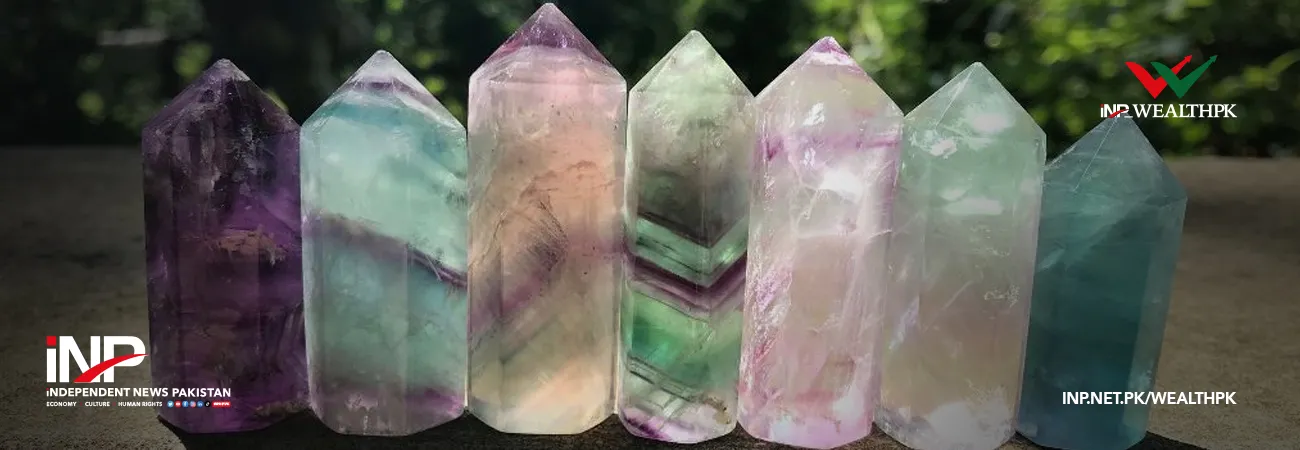INP-WealthPk
Ahmed Khan Malik
Pakistan lacks high-tech machinery for producing fluorite-based value-added products from its huge fluorite deposits, a study by the Trade Development Authority of Pakistan (TDAP) shows. According to the recent study, Balochistan has estimated fluorite deposits of 50,000 tonnes. In the value addition section, the purity of fluorite is enhanced by removing related minerals from it. Pakistan only exports fluorite concentrates and fines to Turkey, the Republic of Korea, Italy, Saudi Arabia, Thailand, and Malaysia. The value-addition process includes washing, drying, and producing fines and concentrates. Pakistan produces calcium fluorite fine powder of up to 30mm in size.
The first largest deposit of fluorite (over 0.1million ton) is in Dilband in the vicinity of the Kirthar foldbelt, while the second largest deposit of 6,750 tons of green fluorite is in the Mula-Zahri Range of the Kirthar foldbelt. The third largest deposit is in the Loralai district and its vicinity in the Sulaiman foldbelt. The fluorite of the Loralai area occurs as veins and disseminated grains along faults and fractures hosted by the Jurassic Loralai limestone, forming the anticlinal core. Loralai has 50,000 tonne deposits of fluorite. Attractive gem quality fluorite crystals are found in light-green, yellow and light-blue colors from Mekhtar, Wategam Zarah of Loralai.
Fluorite has a wide variety of uses. The primary uses are in metallurgy, ceramics, and chemical industries; however, optical, lapidary, and other uses are also important. Metallurgical industry uses fluorite to lower the melting temperature in order to save energy. For every tonne of metal made, 20-60 pounds of fluorspar is used. It is utilised as a metal refining agent and also plays a role in reducing the sulphur content of steel. Chemical and medical industry fluorite is utilised in the synthesis of numerous pharmaceuticals and industrial chemicals, including hydrofluoric acid, aluminum fluorites, fluorocarbons, fluoropolymers like teflon, fluorodeoxyglucose, and antibiotic ofloxacin, among many others.
Ceramics, enamelware, and specialty glass are all made with fluorite. It is also used to create hard glossy, opalescent surfaces, and a variety of other looks that make consumer glass goods more appealing or more durable. Teflon, a non-stick cooking surface, is manufactured with fluorine that comes from fluorite. The gem and jewelry industry uses high grade fluorite in jewelry. Pakistan exports different forms of minerals in raw form, though a huge foreign exchange can be earned through a little value addition. For example, China has been importing significant amounts of raw materials to manufacture finished products and export. Pakistan can also benefit from this sector.
The mineral sector has a low share in Pakistan’s GDP, which can be increased further. This will in turn generate more job opportunities. Mining and quarrying have less than 3.0 percent share in the country’s economy, while China’s mineral trade accounts for about 25 percent of the country’s total trade. So, this sector has huge potential for growth.
Credit: INP-WealthPk













